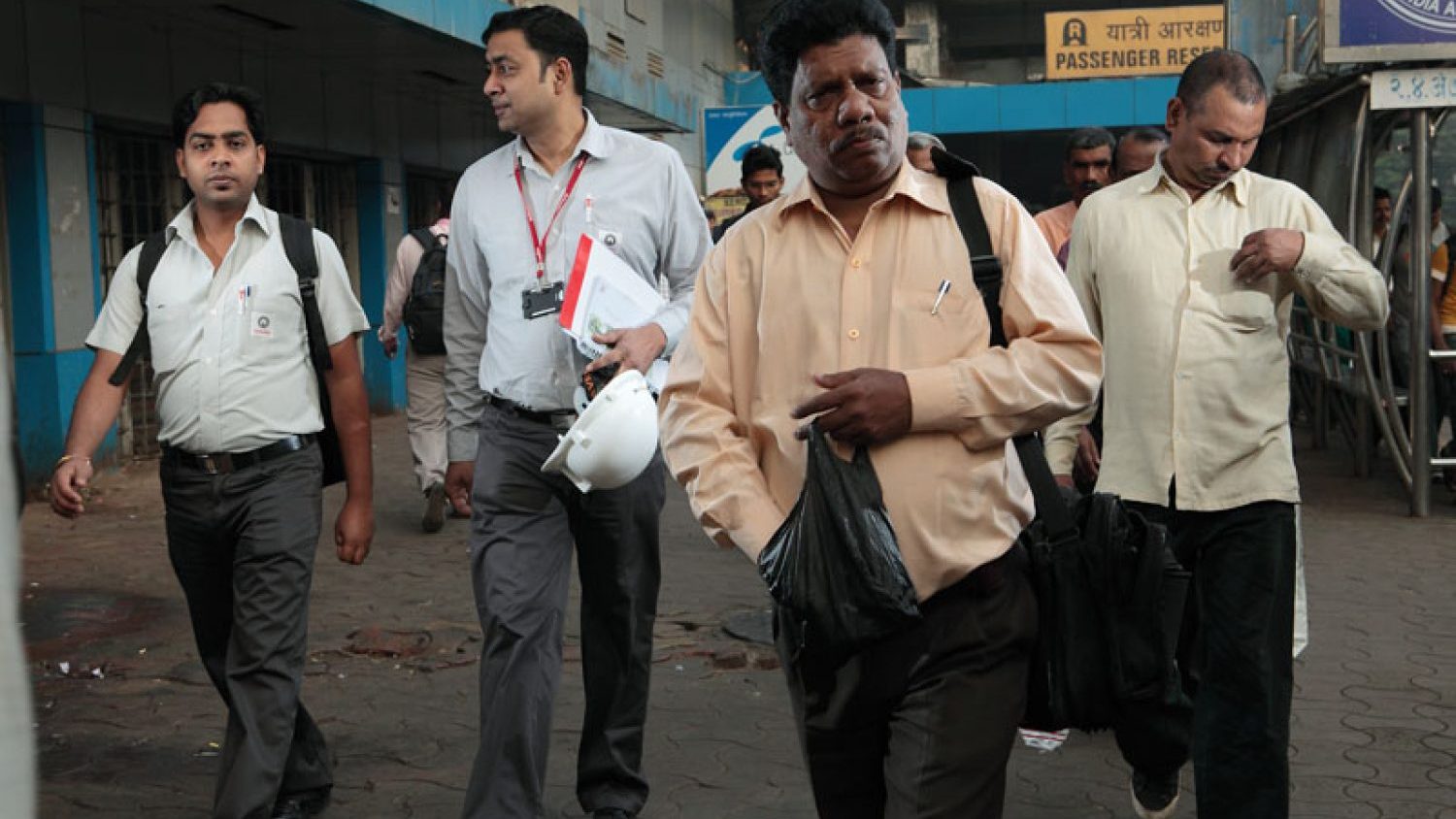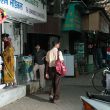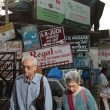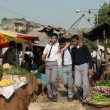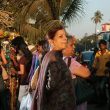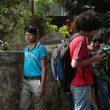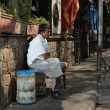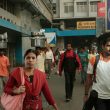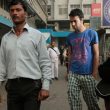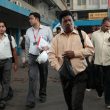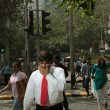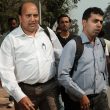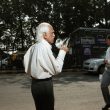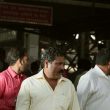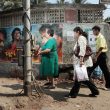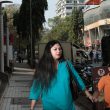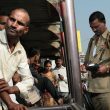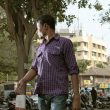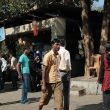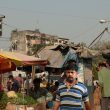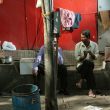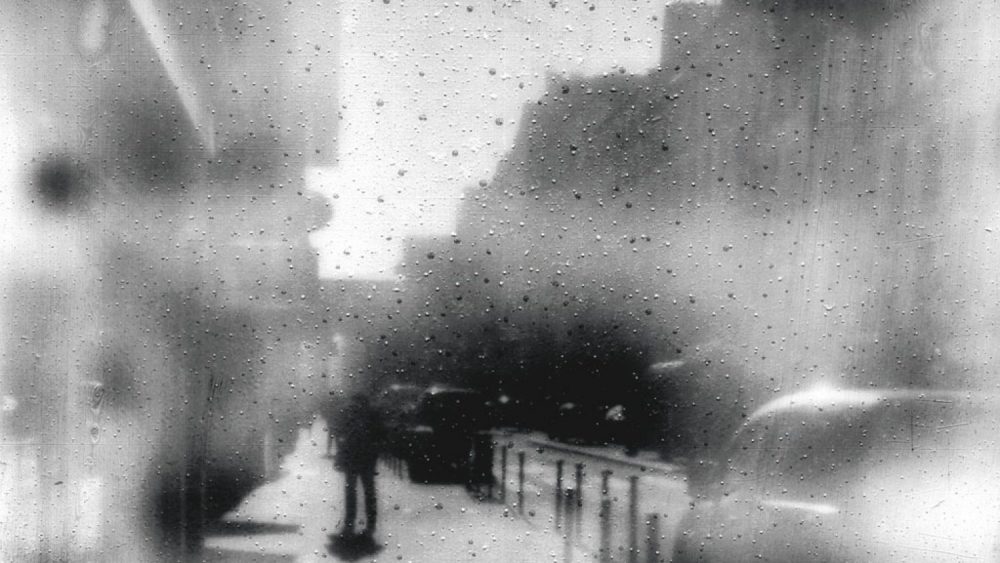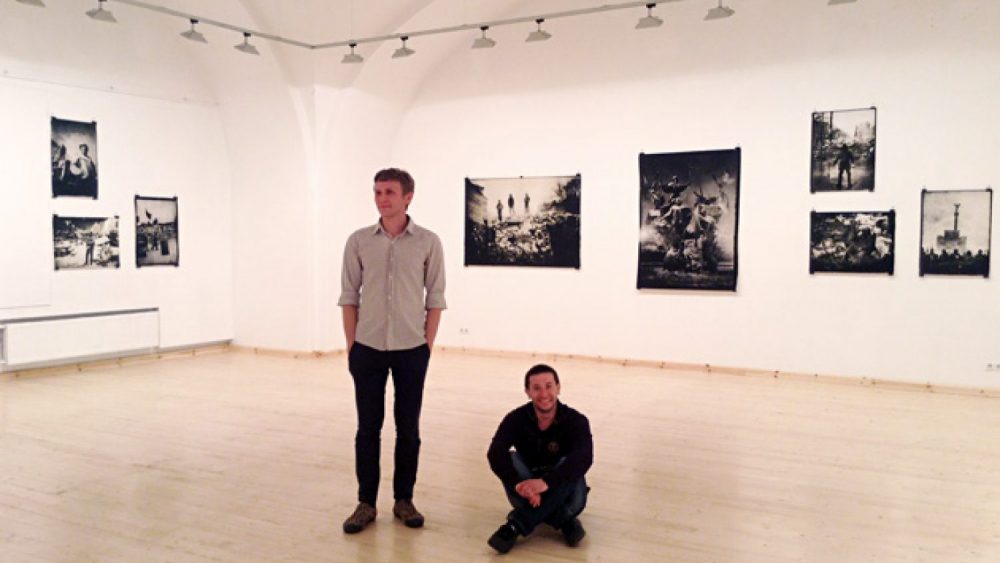Richard Rowland
The correlation of the world’s economy and urban landscape, as well as the role of man in it are the issues that interest British photographer Richard Rowland (1968). In his projects he has documented both Asia – artificially created cities in China following the Western example, and Dubai, a city without history, and his native Great Britain, taking photographs of the camp of the Occupy London demonstration, that was set up nearby to St Paul’s Cathedral in central London on 15 October 2011 to protest against corporate greed and remained there till the end of February 2012.
One of the latest Rowland’s projects (under working title Mumbai – a modern life) that was implemented at the beginning of this year on the buzzing streets of Mumbai visually refers to the traditional street photography that is always on the move and capturing moments. At the same time, it contradicts its historically established objections for documental truth. Rowland, similarly to the American photographer Philip-Lorca diCorcia’s street photography series Heads, lights up his objects with a flashlight, thus turning from an observer into a scene director with a street as his location. This reminds of the photograph’s fictive character.
What are your main interests in photography?
Wow – that’s a big question, as it is always changing! Regarding my practice, it has increasingly become about the changing nature of the urban landscape and our relationship to this. Key to my work is the place of the figure in the landscape – our place as citizens in the built environments we create around us.
You have been photographing urban landscapes in China and Dubai. However, the Mumbai project is quite different from your previous ones – you use digital instead of film, flashlight instead of only natural light and an approach that is closer to street photography as opposed to detached architectural cityscapes. What made you change your way of working?
Photographing Mumbai was a very different challenge for me and it offered up a very contrasting type of urban landscape compared to a new city like Dubai or a reconfigured one such as Shanghai. The project is about the relationship of the traditional, collective way of living and the rise of the individual within modern society, so there was a proximity to people in the street that was central to the work. I had to respond quickly to situations and communicate swiftly with my assistant as she set up the lighting. Shooting digitally freed me up to experiment. I like to set myself challenges both conceptually and technically with each new project. I get bored easily so it’s a way of keeping things fresh and myself motivated!
How do you choose places to photograph?
As I mentioned, my interest in the city lies in the changing urban landscape and its relationship to the economic and conditions of our time. It could be said that the economy reshapes the physical and social terrain in its own image. I’m drawn to extreme examples of this phenomenon, where cities are shifting rapidly both in size and form. I feel they are the key to our understanding the logics of the global economy within which most of us now exist. From the new, unified metropolis of Dubai to the multi-layered historic Mumbai that is forced into reconciling itself with rapidly evolving late capitalism of the 21st century.
Does your way of photographing change when you work on projects outside of England?
Yes. There is an intensity involved in working for a period of weeks or months in a new and unfamiliar place. Detachment and isolation are prevalent in the work and I think that indicates the way I often feel when away from home. I think my work falls somewhere between detachment and engagement, which represents something of my psychological state at the time.
Do you think it is important for a photographer to be politically engaged?
If you are working within a documentary tradition then I think you need to be engaged with the world around you. Not necessarily politically, but you are gathering information from the world and attempting to make sense of this data. So, yes, there needs to be a social engagement in this sort of photographic work. However, there are limits and I never expect photography to do more than reveal something of its subject.
